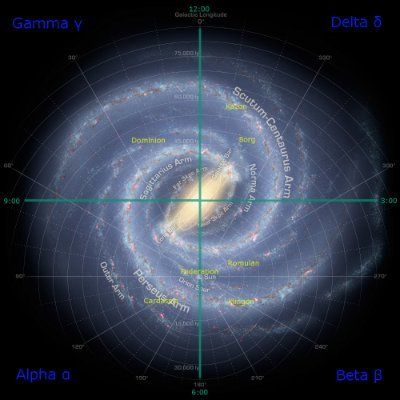
Carolyn Collins Petersen
Science Writer at Freelance
On Earth, work in space. Love clear blue skies. Wear mask, wash hands, get shots. Watch launches! Science: it works! Joined July 2008. date below should match.
Articles
-
4 days ago |
universetoday.com | Carolyn Collins Petersen
Astronomers have found a new way of accurately mapping the outer gas disk of the Milky Way using the positions of young stars. In the process, they've also discovered that our galaxy's structure is more complex than everyone thought, complete with tufty-looking "flocculent" gas clouds. University of Alabama's Sukanya Chakrabarti and MSU astronomer Peter Craig came up with the process of mapping hydrogen gas in the Milky Way's outer disk by determining distances to very young stars in it.
-
1 week ago |
universetoday.com | Carolyn Collins Petersen
The early Universe was a busy place some 13 billion years ago. That's when countless young galaxies began to evolve and birthed stars at a prodigious rate. The hearts of those very distant galaxies show turbulent, lumpy disks studded with even thicker clumps of dust and gas that spawned their huge batches of stars. Astronomers want to understand what's driving the clumping, so they've turned to recent surveys of closer galaxies in the "local Universe" that contain similar lumpy regions.
-
1 week ago |
universetoday.com | Carolyn Collins Petersen
In 1912, astronomer Victor Hess discovered strange, high-energy particles known as "cosmic rays." Since then, researchers have hunted for their birthplaces. Today, we know about some of the cosmic ray "launch pads", ranging from the Sun and supernova explosions to black holes and distant active galactic nuclei. What astronomers are now searching for are sources of cosmic rays within the Milky Way Galaxy.
-
2 weeks ago |
universetoday.com | Carolyn Collins Petersen
For most of us, dust is just something we have to clean up. For astronomers, interstellar dust is a hindrance when they want to study distant objects. However, recent James Webb Space Telescope (JWST) observations of a distant galaxy are changing that. This infrared-sensitive observatory is letting them find a way to use dust to understand the evolution of early galaxies.
-
2 weeks ago |
universetoday.com | Carolyn Collins Petersen
Astronomers recently used a pair of powerful telescopes to zero in on a cosmic battle occurring some 11 billion light-years away from Earth. The combatants are a pair of galaxies charging at each other over and over again, at velocities upwards of 500 kilometers per second. According to one of the scientists studying the scene, one galaxy is cutting into the heart of the other with a blast of radiation.
Try JournoFinder For Free
Search and contact over 1M+ journalist profiles, browse 100M+ articles, and unlock powerful PR tools.
Start Your 7-Day Free Trial →X (formerly Twitter)
- Followers
- 3K
- Tweets
- 21K
- DMs Open
- No